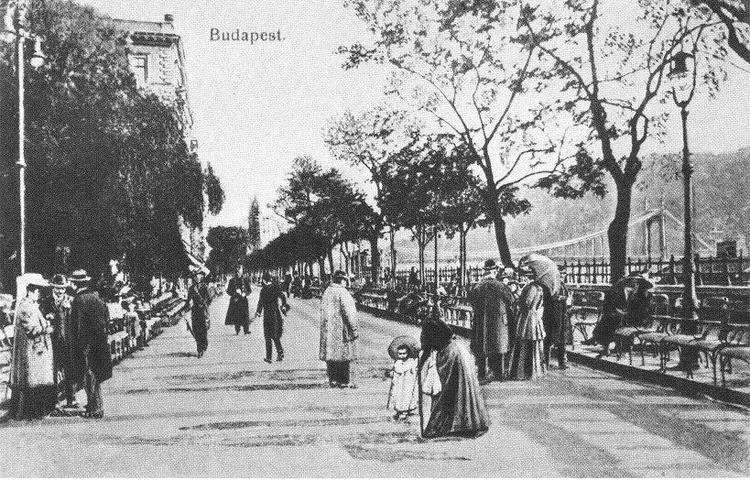 | ||
Hours Open today · Open 24 hoursFridayOpen 24 hoursSaturdayOpen 24 hoursSundayOpen 24 hoursMondayOpen 24 hoursTuesdayOpen 24 hoursWednesdayOpen 24 hoursThursdayOpen 24 hours Similar Shoes on the Danube, House of Terror, Hősök tere, Fisherman's Bastion, St Stephen's Basilica | ||
Heart rending shoes on the danube promenade
The Danube Promenade is located on the Pest side of Budapest, Hungary. On the bank of the Danube, this promenade extends from the Széchenyi Chain Bridge to the Erzsébet Bridge.
Contents
- Heart rending shoes on the danube promenade
- History
- Buildings and architecture
- Sculptures
- View from Danube Promenade
- View to Danube Promenade from Naphegy
- References
History
A row of hotels on the bank of the Danube began to be built in 1867: these were the Hungaria (1867 A. Skalinczky), Bristol, Carlton, and Ritz (Danube Palace). In 1945 at the end of World War II, only the Bristol (Danube Hotel) survived the destruction of the row of hotels on the bank of the Danube. In 1969 the final form of the Bristol Hotel was demolished.
Buildings and architecture
Buildings and landmarks in the promenade include:
In the midst of boxes of glass hotels is the eccentric Neo-Byzantine Vigadó Concert Hall, which survived the building boom of the late 1960s. Behind the Vigadó is the local hub of the city, Vörösmarty tér, named after the 19th-century poet Mihály Vörösmarty. The traditional Gerbeaud coffeehouse has long been a great people watching spot. Váci utca and environs is the area for chic clothing, used books, folk art and sidewalk cafés. Further along the promenade is Március 15 tér, where the remains of a Roman bastion, Contra-Aquincum, were discovered, The Inner City Parish Church’s simple exterior conceals a colorful past: it began as a Romanesque basilica, was used as a mosque and was finally reconceived in the Baroque style in the 18th century.
Sculptures
View from Danube Promenade
From left to right: Tabán Church; Buda Castle with the Royal Palace at night; Matthias Church; Széchenyi Chain Bridge
